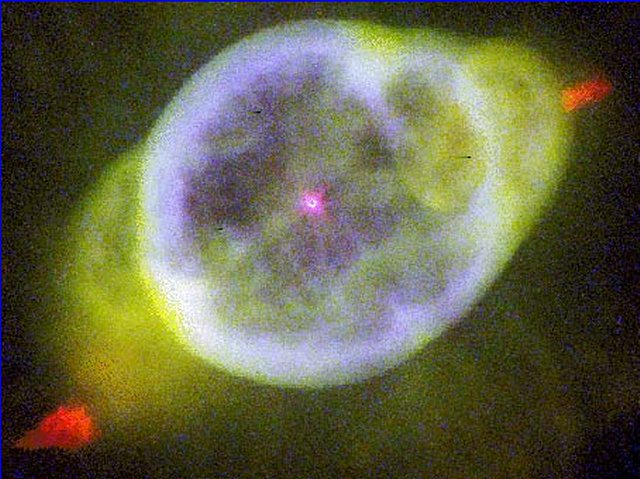
|
North Central Kansas Astronomical Society |
Home | Carbon
Stars | Double Stars | Galaxies |
Globular Clusters | Nebulae |
Open Clusters
Solar
System | Stars | Images |
Asterisms
| Student Images
| Current
Weather

NGC 3242 - After a star like our Sun completes fusion in its core, it throws off its outer layers in a striking display called a planetary nebula. NGC 3242 is such a planetary nebula, with the stellar remnant white dwarf star visible at the center. This nebula is sometimes called "The Ghost of Jupiter" for its similar appearance to the familiar planet. NGC 3242 is much farther away however, than the measly 40 light-minutes distance to Jupiter. In fact, by comparing the apparent expansion rate with the actual rate determined from Doppler studies, astronomers have estimated the distance to NGC 3242 to be about 1400 light-years away. The red FLIERs visible near the edges of the nebula remain mysterious.
| ANDROMEDA (An-DROM-eh-da) The Princess. Genitive: Andromedae (An-DROM-eh-dee). Abbreviation: And | |
|---|---|
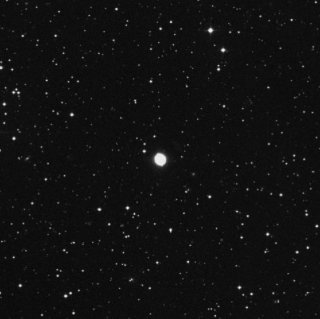 |
Blue Snowball, NGC 7662 Other description: Planetary nebula ring. Constellation: And Dreyer description: A magnificent (or otherwise interesting) object! Planetary nebula or ring, very bright, pretty small, round, blue, variable nucleus. Magnitude: 9.0 RA: 23h 26m 03.8s Dec: +42░34'25" RA: 23h 25m 54.0s Dec: +42░33'00" (Epoch 2000) **** Observation Log **** One of our favorites. We'll start out the tour with this familiar beauty. This little jewel is a faint light blue oval. A wonderful object to start the night with tonight. We used a 23mm Ultima eyepiece on the 203mm Celestron Schmidt-Cassegrain to yield 88X. Then added a 2x Ultima Barlow adapter to yield a 176X. You can see a slight structure to the oval with a brighter outer ring and dimmer inner area. We were unable to resolve any other features. |
|
|
|
| AQUARIUS (AK-WARE-ee-us) The Water-Pourer. Genitive: Aquarii (AK-WARE-ee-eye). Abbreviation: Aqr | |
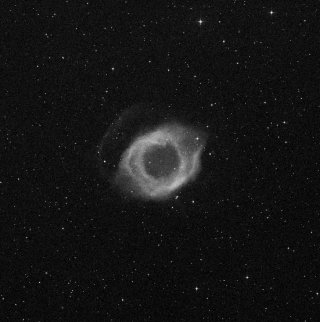 |
Helix Nebula, NGC 7293 Other description: Planetary nebula ring with central star. Constellation: Aqr Dreyer description: Remarkable! Pretty faint, very large, extended or binuclear. RA: 22h 29m 48.6s Dec: -20░46'54" RA: 22h 29m 36.0s Dec: -20░48'00" (Epoch 2000) **** Observation Log 10/6/2002**** Wow! This baby is huge and dim. Popped in the Lumicon O III and up pops the Helix Nebula! Absolutely invisible without the O III filter. Was barely able to see it much fainter using a Meade Broadband #911B Nebula filter. Could definitely see the structure. **** Observation Log 09/22/2003**** Very nice! Used the NS 11 GPS with the Lumicon OIII. Wispy structure in the interior was just visible on this fine, clear night. **** Observation Log 10/22/2003**** Stopped at a wonderful dark-sky site and this huge object was an easy binocular object! It was gorgeous. Could just barely make out the ring structure, but could clearly see the round shape. Remarkable! Invisible from our moderately dark site without a nebula filter. Very large and diffuse. Barely visible with an LPR Broadband #911B filter, but the Lumicon O III is a must. Really pops into view. Could see some structure with the center portion darker. |
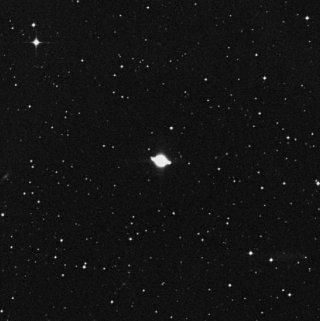 |
Saturn Nebula NGC 7009 Other description: Planetary nebula irregular. Constellation: Aqr Dreyer description: A magnificent (or otherwise interesting) object!, planetary nebula, very bright, small, elliptic. Magnitude: 8.0 RA: 21h 04m 20.5s Dec: -11░21'23" RA: 21h 04m 12.0s Dec: -11░22'00" (Epoch 2000) **** Observation Log **** Can see without any filter. Has a distinct oval shape. The Lumicon O III filter really brightens this and can see some slight structure difference in the oval shape. |
 Back to top...
Back to top... |
|
| AURIGA (aw-REE-ga) The Charioteer. Genitive: Aurigae (aw-RYE-je). Abbreviation: Aur | |
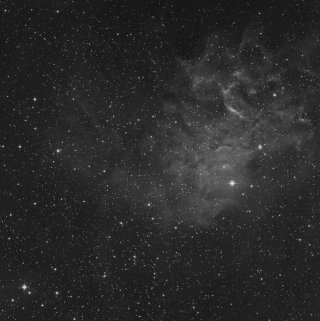 |
Flaming Star IC 405 Dreyer description: 6.7th magnitude star with pretty bright, very large nebula. RA: 05h 16m 28.5s Dec: +34░16'24" RA: 05h 16m 12.0s Dec: +34░16'00" (Epoch 2000) **** Observation Log **** |
|
|
|
|
CAMELOPARDALIS (ka-MEL-oh-pard-al-iss) The Griaffe. Genitive: Camelopardalis (ka-MEL-oh-pard-al-iss). Abbreviation: Cam |
|
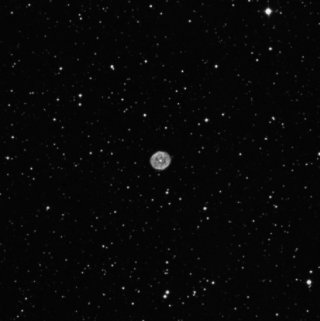 |
NGC 1501 Other description: Planetary nebula ring. Constellation: Cam Dreyer description: Planetary nebula, pretty bright, pretty small, very little extended, 1' diameter. Magnitude: 13.0 RA: 04h 07m 21.5s Dec: +60░55'50" RA: 04h 07m 00.0s Dec: +60░55'00" (Epoch 2000) ******* 12/20/2003, 12:20 AM ******* Rather challenging small planetary in Camelopardalis. This small oval planetary nebula is just south of Kemble's Cascade. The central star is visible and the structure is just visible at higher magnifications. |
 Back to top...
Back to top... |
|
|
CASSIOPEIA (Kass-ee-oh-PEE-ah) The Queen. Genitive: Cassiopeiae (Kass-ee-oh-PEE-yee). Abbreviation: Cas |
|
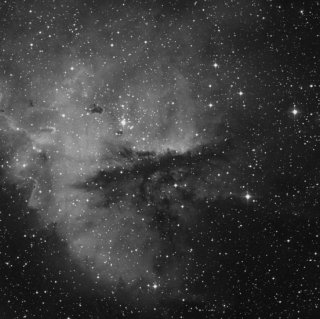 |
NGC 281 Other description: Nebula with dust low brightness. Constellation: Cas Dreyer description: Faint, very large, diffused, small triple star on northwest extremely diameter gradually extremely. Magnitude: 7.0 RA: 00h 53m 00.2s Dec: +56░38'30" RA: 00h 52m 48.0s Dec: +56░37'00" (Epoch 2000) **** Observation Log **** A very lovely, large nebula in a coma shape. Pretty easy to see if you are lucky enough to have a dark-sky site. An O III filter really helps on this object. A magnification of around 80X seemed to work the best. |
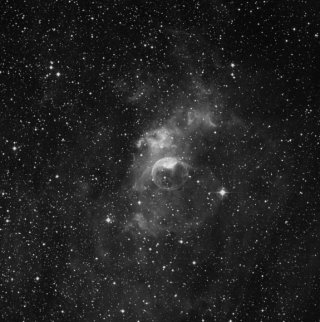 |
Bubble Nebula, NGC 7635 Other description: Nebula low brightness. Constellation: Cas Dreyer description: Very faint, 8th magnitude star involved little excentric. RA: 23h 20m 53.7s Dec: +61░13'09" RA: 23h 20m 42.0s Dec: +61░12'00" (Epoch 2000) **** Observation Log **** |
 Back to top...
Back to top... |
|
| CEPHEUS (SEE-fee-us) The King. Genitive: Cephei (See-fee-eye). Abbreviation: Cep | |
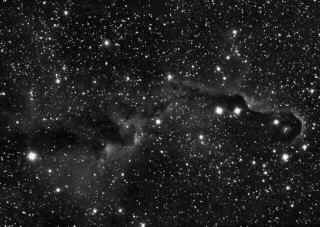 |
Elephant Trunk, IC 1396 Dreyer description: Nebula part of Milky Way. Magnitude: 3.0 RA: 21h 39m 10.5s Dec: +57░31'08" RA: 21h 39m 06.0s Dec: +57░30'00" (Epoch 2000) **** Observation Log **** |
 Back to top...
Back to top... |
|
| CORVIS (KOR-vus) The Crow. Genitive: Corvi (KOR-vi). Abbreviation: Crv | |
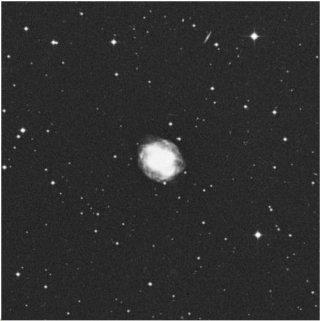 |
NGC 4361 Planetary nebula irregular. Constellation Corvis Magnitude: 10.00 RA, Dec: 12h 24m 36.2s , 18d 48m 40s S Az, Alt: 194d 17m 18s , 30d 28m 50s N Rise:16h 29m Transit:21h 26m Set: 2h 27má Source Catalog NGC Size (mins) 1.8 RA, Dec: 12h 24m 30.0s , 18d 48m 0s S (E2000) **** Observation Log**** |
 Back to top...
Back to top... |
|
| CYGNUS (SIG-nus) The Swan. Genitive: Cygni (SIG-ni). Abbreviation: Cyg | |
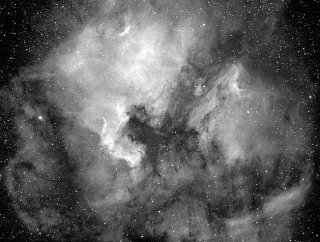 |
North American Nebula, NGC 7000 Other description: Nebula with dust. Constellation: Cyg Dreyer description: Faint, most extremely large, diffused nebulosity. RA: 20h 58m 55.6s Dec: +44░21'04" RA: 20h 58m 48.0s Dec: +44░20'00" (Epoch 2000) **** Observation Log 10/22/2003**** This is one huge object and an incredibly challenging telescope object. It is a very tenuous and dim object and only stands out in long exposure photography. On a clear night at a wonderful dark-sky site, I was able to use binoculars and finally spot this object for sure. This picture is by Steve Mandel with a Hydrogen-Alpha filter. |
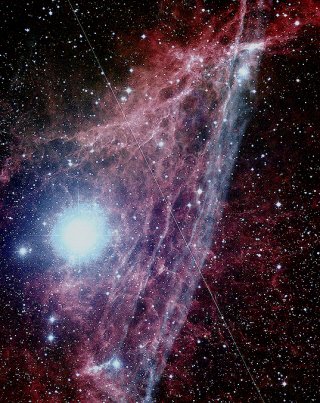 |
Cirrus Nebula, Filamentary Nebula,
Lace-work Nebula, Veil Nebula NGC 6960 Other description: Nebula. Constellation: Cyg Dreyer description: Very remarkable! Pretty bright, considerably large, extremely irregular figure, 52 Cyg involved. RA: 20h 45m 50.8s Dec: +30░43'58" RA: 20h 45m 42.0s Dec: +30░43'00" (Epoch 2000) **** Observation Log **** A wonderful object to behold indeed! This is a huge Super Nova Remnant or SNR. An O III filter is a must on this object. Absolutely incredible. This is one of the most amazing things to see. Again the Lumicon O III brings this whispy nebula in easily. I am really looking forward to photographing this object. |
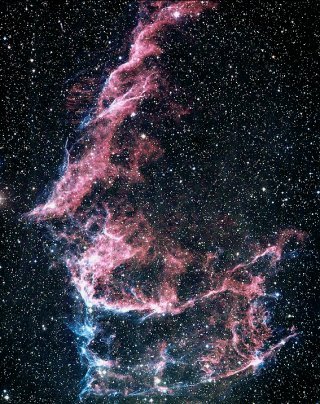 |
Network Nebula,
NGC 6992 Other description: Nebula. Constellation: Cyg Dreyer description: Very remarkable!, extremely faint, extremely large, extremely extended, extremely irregular figure, bifurcated. RA: 20h 56m 30.6s Dec: +31░43'47" RA: 20h 56m 24.0s Dec: +31░43'00" (Epoch 2000) **** Observation Log **** Absolutely breath-taking. The Lumicon O III really brings this elusive object out. Barely visible as a slight brightening with a Broadband LPR #911B filter. When I pop in the O III, what a sight! The view through a 10" Dob and 35mm TeleVue Panoptic is fantastic! |
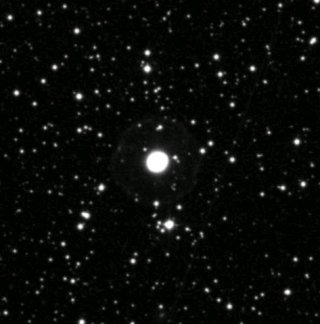 |
Blinking Planetary NGC 6826 Other description: Planetary nebula disc with central star. Constellation: Cyg Dreyer description: Planetary nebula, bright, pretty large, round, 11th magnitude star middle. Magnitude: 10.0 RA: 19h 44m 52.2s Dec: +50░31'38" RA: 19h 44m 48.0s Dec: +50░31'00" (Epoch 2000) **** Observation Log **** Wow! It really blinks! Using averted vision the glow of the nebula really shows up. Looking directly at it, the pin-point star shows through. Used the Lumicon O III to catch a whisp of the outside ring. Could be a ghosted image too. |
|
|
|
| DRACO (DRAY-ko) The Dragon. Genitive: Draconis (DRAY-Ko-nis). Abbreviation: Dra | |
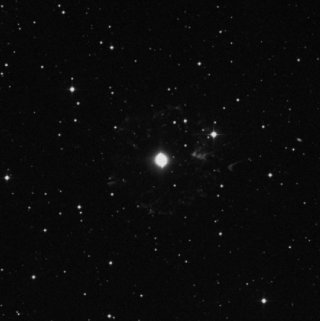 |
NGC 6543, Cat's Eye Nebula Other description: Planetary nebula disc with central star. Constellation: Dra Dreyer description: Planetary nebula, very bright, pretty small, abruptly brighter middle very small nucleus. Magnitude: 9.0 RA: 17h 58m 39.3s Dec: +66░37'51" RA: 17h 58m 36.0s Dec: +66░38'00" (Epoch 2000) **** Observation Log **** A very bright small planetary. Has the distinctive robin egg blue tint. Really pops out at you with an O-III filter. In this near I.R. picture you can see the extended halo of gas. Very similar to The Blue Snowball planetary in Andromeda. |
 Back to top...
Back to top... |
|
| GEMINI (JEM-in-eye) The Twins. Genitive: Geminorum (JEM-i-nor-um). Abbreviation: Gem | |
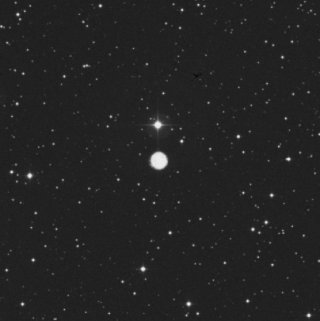 |
Clown Face Nebula, Eskimo Nebula, NGC 2392 Other description: Planetary nebula ring with central star. Constellation: Gem Dreyer description: Bright, small, round, 9th magnitude star middle, 8th magnitude star northeast 100". Magnitude: 10.0 RA: 07h 29m 27.0s Dec: +20░54'33" RA: 07h 29m 12.0s Dec: +20░55'00" (Epoch 2000) **** Observation Log **** The Eskimo Nebula, aka The Clown Nebula: A pretty famous Planetary Nebula in Gemini, due to the Hubble Space Telescope's wonderful image. Typical grey with bright center and dims to the outside. Oval in shape through the 8". *1/12/04 - This little planetary exhibited a definite darker center with a clearly visible white middle star. The mottled look of the center can be glimpsed with averted vision. This planetary to me also "blinks" like other planetaries with direct vision, then averted vision. |
|
|
|
| HYDRA (HIGH-dra) The Female Water Snake. Genitive: Hydrae (HIGH-dree). Abbreviation: Hya | |
 |
Ghost of Jupiter, NGC 3242 Other description: Planetary nebula ring with central star. Constellation: Hya Dreyer description: Remarkable! Planetary nebula, very bright, little extended 147░, 45" diameter, blue. Magnitude: 9.0 RA: 10h 24m 59.9s Dec: -18░39'05" RA: 10h 24m 48.0s Dec: -18░38'00" (Epoch 2000) **** Observation Log **** The Eye Nebula or "Ghost of Jupiter" nebula in Hydra. Wonderful easy oval-round with the familiar turquoise color of Planetary Nebula. Looks pretty uniform with a slight brightening toward the center. |
|
|
|
|
LYRA (LIE-ra) The Lyre. Genitive: Lyrae (LIE-re). Abbreviation: Lyr |
|
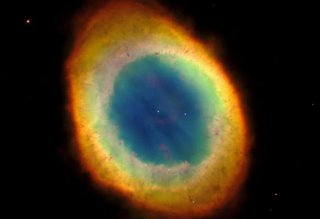 |
Ring Nebula in Lyra, M57, NGC 6720 Other description: Planetary nebula ring with central star. Constellation: Lyr Dreyer description: A magnificent (or otherwise interesting) object!, ring, bright, pretty large, considerably extended (in Lyra); = M57. Magnitude: 9.0 RA: 18h 53m 42.8s Dec: +33░02'09" RA: 18h 53m 36.0s Dec: +33░02'00" (Epoch 2000) **** Observation Log **** M57 is the first deep sky object I ever tried to hunt down with a 3" refractor. Once you see this incredible object, you'll be hooked. This is an amazing planetary that looks like a little small grey smoke ring! |
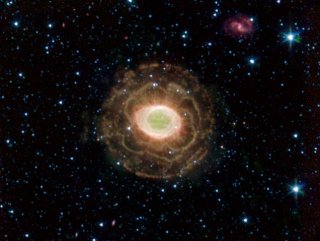 |
Ring Nebula in Lyra, M57, NGC 6720 In Infrared by the Spitzer Space Telescope Other description: Planetary nebula ring with central star. Constellation: Lyr Dreyer description: A magnificent (or otherwise interesting) object!, ring, bright, pretty large, considerably extended (in Lyra); = M57. Magnitude: 9.0 RA: 18h 53m 42.8s Dec: +33░02'09" RA: 18h 53m 36.0s Dec: +33░02'00" (Epoch 2000) |
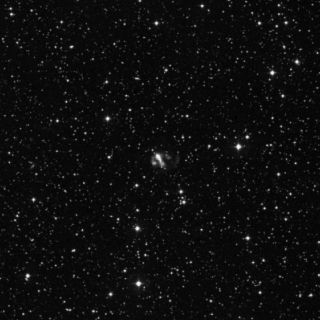 |
NGC 6765 Other description: Planetary nebula irregular. Constellation: Lyr Dreyer description: Faint, small, extended. RA: 19h 11m 19.2s Dec: +30░33'42" RA: 19h 11m 06.0s Dec: +30░33'00" (Epoch 2000) **** Observation Log **** |
|
|
|
|
MONOCEROS (Mo-NOS-er-os) The Unicorn. Genitive: Monocerotis (Mo-NOS-eroo-tis). Abbreviation: Mon |
|
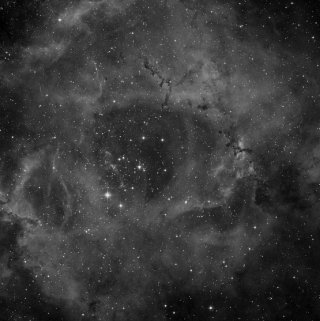 |
Rosette Nebula, NGC 2237-39 Other description: Open cluster with nebulosity. Constellation: Mon Dreyer description: Cluster, beautiful, stars scattered (12 Mon). Magnitude: 4.8 RA: 06h 32m 37.5s Dec: +04░51'52" RA: 06h 32m 24.0s Dec: +04░52'00" (Epoch 2000) ******* Observer Log ******* Rosette Nebula and NGC 2244 covers 3║ of sky! 1/13/04-Was able to finally see this huge nebula from a dark-sky sight. I used a 4" refractor at 17X , with an O III filter and the view was stunning! I could see the entire circle of the nebula the northern and western part appeared to be brightest. 1/22/04-Was able to view this huge nebula from a dark-sky site with 10X50 binoculars. I was surprised by how huge this nebula is. It covered almost the entire view in binoculars. |
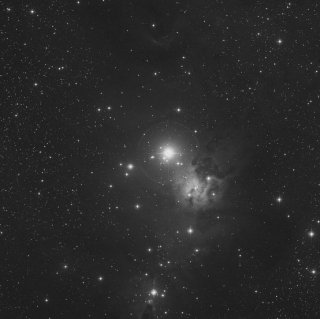 |
Christmas Tree Cluster, Cone Nebula, NGC 2264 Other description: Open cluster with nebulosity. Constellation: Mon Dreyer description: Extremely large nebula, 3░ diameter, diameter extremely north-south extremely stars 12' southwest 15 Mon. Magnitude: 3.9 RA: 06h 41m 20.0s Dec: +09░52'50" RA: 06h 41m 06.0s Dec: +09░53'00" (Epoch 2000) ******* Observer Log ******* Christmas Tree cluster and Cone Nebula: Wow! Looks like a Christmas Tree outline, hence the name. This is also the home of the Cone Nebula. I saw no nebulousity though. The APOD is stunning. 1/13/04-Was not able to detect this nebula with the 4" refractor and OIII that was able to bring in the Rosette Nebula. |
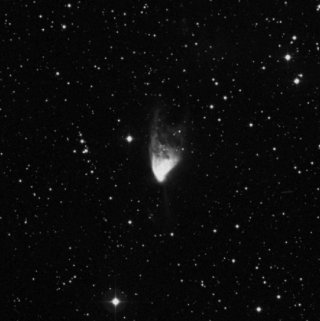 |
Hubble's Variable Nebula NGC 2261 Other description: Nebula bright. Constellation: Mon Dreyer description: Bright, very moderately extended 330░, nucleus cometary form = 11th magnitude star. RA: 06h 39m 29.4s Dec: +08░43'46" RA: 06h 39m 12.0s Dec: +08░44'00" (Epoch 2000) Azm: 180░08'04" Alt: +59░33'16" Rise: 14:49 Transit: 21:19 Set: 03:54 Size: 2.0' Hour angle: 00h 00m 16.0s Air mass: 1.16 ******* Observer Log ******* Pretty tough object for smaller scopes, but I was able to glimpse this nebula with a TeleVue 102mm Apo. |
 Back to top...
Back to top... |
|
| OPHIUCHUS (Oh-fee-YOU-kus) The Serpent Bearer. Genitive: Ophiuchi (Oh-fee-YOU-ki). Abbreviation: Oph | |
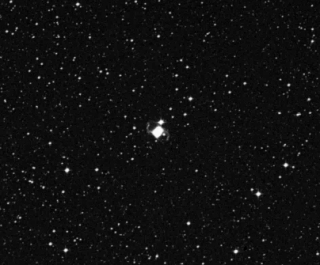 |
Box Nebula, NGC 6309 Other description: Planetary nebula disc. Constellation: Oph Dreyer description: Close double nebula, 160░, both bright, extremely small. Magnitude: 11.0 RA: 17h 14m 40.4s Dec: -12░55'42" RA: 17h 14m 06.0s Dec: -12░55'00" (Epoch 2000) **** Observation Log **** This is a wonderful small planetary. Looks like a thin rectangular box right behind an 8.57 magnitude star. Almost like the tail of a comet. A cool object to hunt down in Ophiuchus. |
 Back to top...
Back to top... |
|
| ORION (Oh-RYE-an) The Hunter. Genitive: Orionis (OR-e-oh-nis). Abbreviation: Ori | |
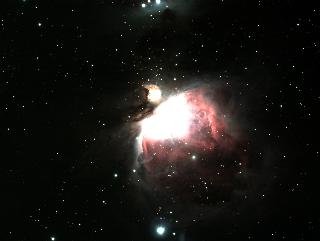 |
M42, Great Nebula
in Orion & M43, NGC 1982 NGC 1976 Other description: Nebula. Constellation: Ori Dreyer description: A magnificent (or otherwise interesting) object! Theta1 Ori and the great nebula; = M42. Magnitude: 4.0 RA: 05h 35m 24.0s Dec: -05░27'00" (Epoch 2000) **** Observation Log **** Perhaps the most remarkable object in the entire sky! An incredible sight even in the smallest of scopes. The Trapezium is a grouping of four stars in the heart of the nebula. Theta-1 Orionis is the western most of these stars and will undergo an eclipse with it's binary partner on the 26-27 of Feb. M43 is the top "comma" feature of the Great Nebula. Not as bright as M42, but on clear nights shows up really well. 1/13/04-Was able to split the Trapezium cleanly into 4 stars with an f/5 4" refractor at 75X. The nebula was strikingly clear. ***Image Log*** 11/5/2010 - This is a 30 minute one-shot color image with an ST-8300C through a TeleVue TV-102 Apo working at f/6.9. Click on the image for a larger version. |
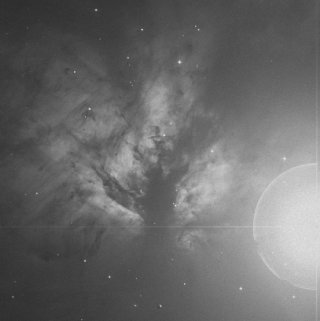 |
Flame Nebula, NGC 2024 Other description: Nebula with dust. Constellation: Ori Dreyer description: Remarkable! Irregular, bright, very, very large, black [lane] included. RA: 05h 42m 06.4s Dec: -01░50'55" RA: 05h 41m 54.0s Dec: -01░51'00" (Epoch 2000) ******* Observer Log ******* 2/20/04 - Was able to glimpse this elusive nebula with a 4" refractor. I helps to put Zeta Orions just out of the FOV. The dark lanes are apparent first and give this beautiful object away. |
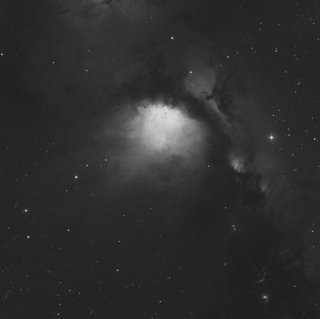 |
M 78, NGC 2068 Other description: Reflection nebula bright. Constellation: Ori Dreyer description: Bright, large, wisp, gradually much brighter nucleus, 3 stars involved, resolvable, but mottled; = M78. Magnitude: 8.0 RA: 05h 46m 55.0s Dec: +00░03'06" RA: 05h 46m 42.0s Dec: +00░03'00" (Epoch 2000) **** Observation Log **** This is a wisp of a nebula that stares at you with glowing eyes! A neat target that is somewhat of a challenge from a light polluted sight. It's well worth hunting down. The nebula is very striking with a pair of equal bright stars embedded that look like ghostly eyes looking out. |
|
|
|
| SERPENS CAUDA (SIR-pens) The Serpent's Tail. Genitive: Serpentis (SIR-pen-tis). Abbreviation: SerCd | |
 |
Eagle Nebula, Star Queen
Nebula, M16, NGC 6611 Other description: Nebula with dust and cluster. Constellation: Ser Dreyer description: Cluster, at least 100 stars large & small; = M16. Magnitude: 6.0 RA: 18h 19m 04.1s Dec: -13░46'58" RA: 18h 18m 48.0s Dec: -13░47'00" (Epoch 2000) **** Observation Log **** Another wonderful nebula in the heart of the summer Milky Way. Again, an easy target for even small scopes. The interior "Eagle" might be a difficult target unless you have dark, clear skies. This complex is an emission nebula (clouds of gas, exited and glowing from the radiation of hot O and B stars) and an impressive open cluster. |
|
|
|
| SAGITTARIUS (Sa-jih-TARE-ee-us) TheArcher. Genitive: Sagittarii (Sa-jih-TARE-ee-eye). Abbreviation: Sgr | |
 |
Hour Glass Nebula, Lagoon
Nebula, M8, NGC 6523 Other description: Nebula with dust and cluster. Constellation: Sgr Dreyer description: A magnificent (or otherwise interesting) object! Very bright, extremely large, extremely irregular figure, with large cluster; = M8. Magnitude: 5.8 RA: 18h 04m 05.3s Dec: -24░23'05" RA: 18h 03m 48.0s Dec: -24░23'00" (Epoch 2000) **** Observation Log **** Gorgeous large Nebula in the heart of the summer Milky Way. An easy target in even small scopes and binoculars. |
 |
Trifid Nebula, M20, NGC 6514 Other description: Nebula with dust. Constellation: Sgr Dreyer description: A magnificent (or otherwise interesting) object! Very bright, very large, trifid (three-lobed), double star involved; = M20. Magnitude: 6.3 RA: 18h 02m 35.2s Dec: -23░02'06" RA: 18h 02m 18.0s Dec: -23░02'00" (Epoch 2000) **** Observation Log **** Another wonderful easy nebula in the heart of the summer Milky Way. The three lobes of the nebula can be glimpsed in a moderate size telescope on clear nights. |
 |
Omega Nebula, Swan Nebula, M17,
NGC 6618 Other description: Nebula. Constellation: Sgr Dreyer description: A magnificent (or otherwise interesting) object!, bright, extremely large, extremely irregular figure, 2 hooked; = M17. Magnitude: 6.0 RA: 18h 21m 04.3s Dec: -16░10'58" RA: 18h 20m 48.0s Dec: -16░11'00" (Epoch 2000) **** Observation Log **** Another wonderful easy nebula in the heart of the summer Milky Way. This nebula looks like a swan even in small telescopes on clear nights. The image of the Swan is somewhat over-powered in this long exposure image. |
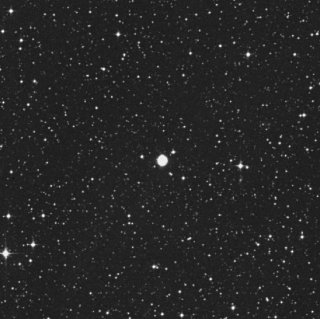 |
Little Gem, NGC 6818 Other description: Planetary nebula ring. Constellation: Sgr Dreyer description: Planetary nebula, bright, very small, round. Magnitude: 10.0 RA: 19h 44m 16.3s Dec: -14░08'23" RA: 19h 44m 00.0s Dec: -14░09'00" (Epoch 2000) **** Observation Log **** A wonderful small turquoise blue planetary. On clear nights can see the patchiness and slightly more oval shape. |
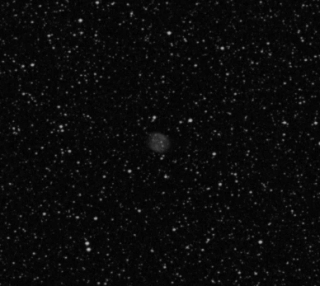 |
NGC 6563 Other description: Planetary nebula disc. Constellation: Sgr Dreyer description: Planetary nebula, faint, large, considerably extended, hazy border. Magnitude: 14.0 RA: 18h 12m 40.7s Dec: -33░51'55" RA: 18h 12m 00.0s Dec: -33░52'00" (Epoch 2000) **** Observation Log **** A dim small planetary in a rich field of stars. Has a slightly oval shape in larger apertures. |
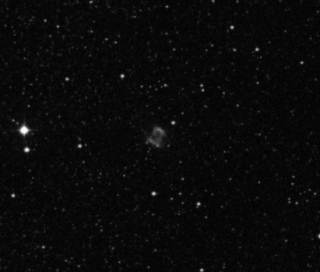 |
NGC 6445 Other description: Planetary nebula irregular. Constellation: Sgr Dreyer description: Pretty bright, pretty small, round, gradually brighter middle, resolvable, but mottled, 15th magnitude star northwest. Magnitude: 13.0 RA: 17h 49m 48.4s Dec: -20░01'13" **** Observation Log **** This small planetary has a pinched in the middle look. Much like the far brighter Dumbell Nebula in Vulpecula, but much smaller. |
|
|
|
| SCORPIUS (SCORE-pee-us) The Scorpion. Genitive: Scorpii (SCORE-pee-eye). Abbreviation: Sco | |
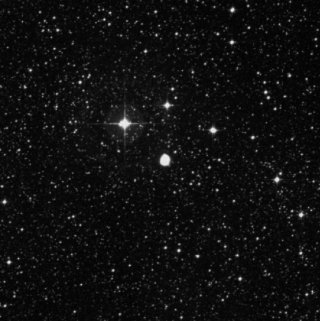 |
NGC 6153 Other description: Planetary nebula disc. Constellation: Sco Dreyer description: Planetary nebula, stellar. Magnitude: 12.0 RA: 16h 31m 44.7s Dec: -40░15'35" RA: 16h 31m 30.0s Dec: -40░15'00" (Epoch 2000) **** Observation Log **** This disc takes on a ring shape with a darker center. An O-III filter really brightens this Planetary. We could not spot this with the 11" SCT, but was able to with the 16" SCT at Maybee Observatory. |
 Back to top...
Back to top... |
|
|
TAURUS (TORE-us) The Bull. Genitive: Tauri (TORE-i). Abbreviation: Tau |
|
 |
Crab Nebula, M1, NGC 1952 Other description: Nebula. Constellation: Tau Dreyer description: Very bright, very large, extended 135░ +/-, very gradually little brighter middle, resolvable, but mottled; = M1. Magnitude: 8.4 RA: 05h 34m 40.3s Dec: +22░01'10" RA: 05h 34m 30.0s Dec: +22░01'00" (Epoch 2000) **** Observation Log **** With our 8" SCT, just a wisp of structure can be noted. Otherwise, an oval patch of haze pretty uniform in brightness. |
 Back to top...
Back to top... |
|
Home | Carbon Stars | Double
Stars | Galaxies | Globular Clusters | Nebulae | Open
Clusters
Solar System | Stars |
Images | Asterisms |
Student Images | Current Weather
© 2005-2022 North Central Kansas Astronomical Society - All Rights Reserved